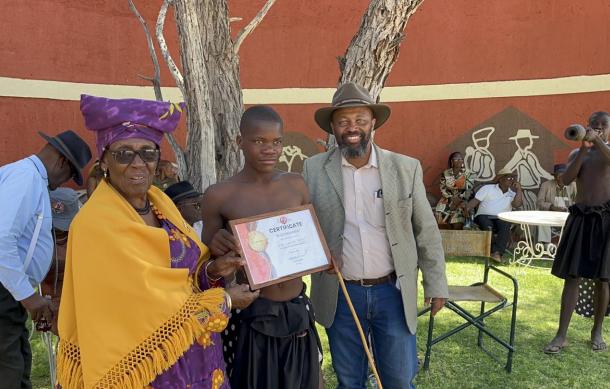
The Ombu Heritage Festival, which aims to preserve the culture of the OvaHerero-speaking people, was hosted over the weekend at the Ombu cultural village in the Otjozondjupa Region.
The two-day festival had a series of cultural demonstrations such as animal slaughter, storytelling, cultural war cry, and traditional perfume making.
The founder of Ombu Cultural Village, Vetumbuavi Mungunda, said the festival is a celebration of the living culture of the Ovaherero people.
"So as you can see, this is already a living museum. So here we've been researching the history of the culture. We have been researching and also trying to preserve certain aspects of the culture. So this is actually a celebration of that living culture that we already are practising daily here. But also, as I said, we want to do this festival in a sense where we make it a competition. And by making it a competition, we want to make sure that we're able to have the best of the best in terms of the people, the few people that still remain, that can practice this culture, for them to come out, for them to hopefully continue to invest in this art and skills that are very important. And I think most importantly, we also want this art and skill to be transferred to the next generation."
Mungunda said the festival will be incorporated into the Namibian calendar.
"We are really hopeful that it will continue to make a difference in terms of growing the culture and heritage of our people. And the good thing as well is that when you've got very knowledgeable people, they help each other to actually add to that knowledge as well. So when one explains something, the other one will also add another aspect, a different perspective."
The cultural village is situated a few kilometres south of Otjiwarongo and boasts a living museum, housing different cultural artefacts that were used by the Ovaherero people.
It also has wooden sculptures of the late Chief Hosea Kutako and drawings of Anna Kakurakaze Mungunda.





